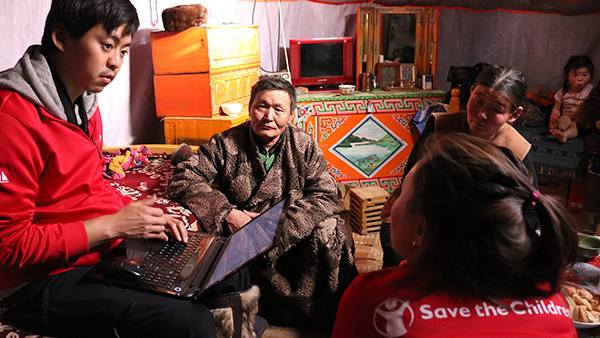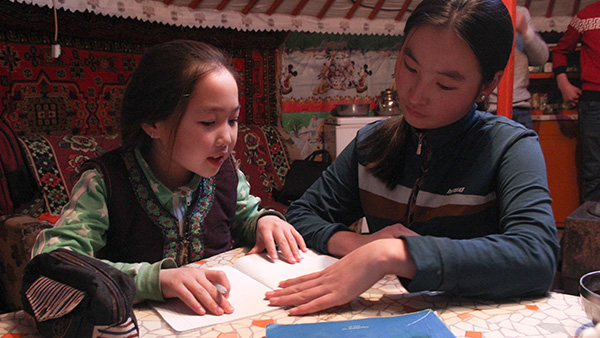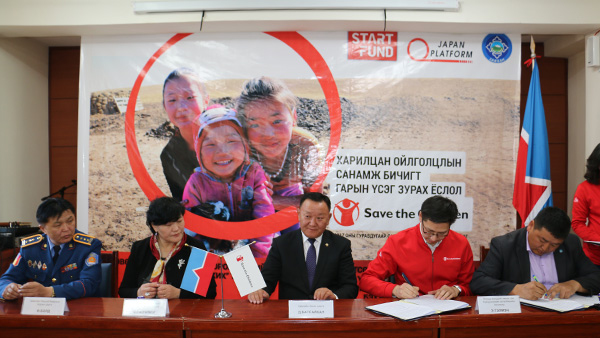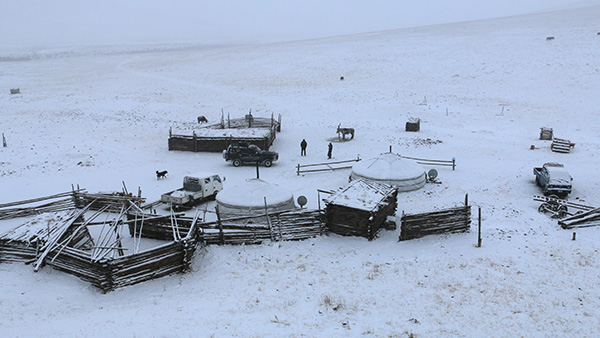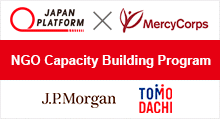Mongolia
Emergency response to Extreme Winter Condition (Dzud)
March 2017~
Dzud is a natural disaster unique to Mongolia, where the summer drought is followed by heavy winter snow and extreme cold temperatures that dip below -40 degrees Celsius (*1) Beginning in November 2015, Mongolia experienced severe snowfall and extreme cold temperatures below -50 degrees Celsius, and after late January of 2016, 211 of the total 339 districts across the nation had fallen into a state of dzud, this uniquely Mongolian large-scale snow disaster, or in a near-dzud condition (*2). At JPF, we launched the "Mongolia Snow Disaster Response 2016" assistance program in April 2016, and began providing assistance for households whose livelihoods were deteriorated by the snow disaster through distribution of food, school supplies for the children, and heater fuel for schools and boarding houses.
However, Mongolia is experiencing dzud again, with an unprecedented amount of heavy snowfall and extreme cold temperatures over 50 degrees Celsius below zero. Mongolian government expressed concerns over the damages spreading across the entire country, and requested international assistance on December 23, 2016. In response, the UN has begun to head assistance efforts there.
Given the current conditions and the action by UN and based on reports from JPF member NGOs, JPF launched the assistance program "Mongolia Snow Disaster Response 2017." Our assistance provision has begun in Mongolia on March 1 (*3).
*1:Dzud is a cyclical slow onset disaster unique to Mongolia. It consists of a summer drought, resulting in insufficient production of hay, followed by very heavy winter snow (10 to 350 cm), winds and lower than normal temperatures (-40°C to -50°C) during which an excessive number of livestock die causing basic services, and in the longer term, livelihoods to collapse in vulnerable herder communities.(IFRC Emergency Appeal, Mongolia: Extreme Winter Condition, 29 Feb 2016)
*2:OCHA, Asia and Pacific: Weekly Regional Humanitarian Snapshot 16-22 February 2016
*3: Save the Children Japan (SCJ) began its project on March 1. Children from nomadic families, who lost their cattle to the dzud and consequently had their livelihood strained, were forced to miss school to take care of the cattle, and this absence often make them fall behind in schoolwork. Also, when extreme cold prolongs, schools and boarding houses may fall short on their fuel budget and limit heater usage, making it exceedingly difficult to secure safe studying and living environment for the children. SCJ is providing assistance for these children in the areas of education as well as disaster prevention.
Program Overview
| Response Period | 12 months |
|---|---|
| Budget | 80 million yen |
NGO's Project : Save the Children Japan (SCJ)
Striving to minimize the negative impact on children's education
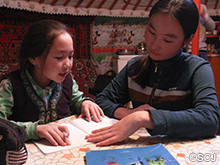 Nomadic households that have lost their livelihood due to zuds, a natural disaster unique to Mongolia where livestock die as a result of a severe winter, have become impoverished, and some children must help their families survive. This may cause some children to be absent from school for long periods of time. SCJ assists the children of these nomadic families with education allowance for children and supplementary classes to reduce the negative impact on their education. In addition, it provides training on emergency psychosocial treatment for children. SCJ also delivers heating fuel to schools and dormitories to create a better schooling environment for children.
Nomadic households that have lost their livelihood due to zuds, a natural disaster unique to Mongolia where livestock die as a result of a severe winter, have become impoverished, and some children must help their families survive. This may cause some children to be absent from school for long periods of time. SCJ assists the children of these nomadic families with education allowance for children and supplementary classes to reduce the negative impact on their education. In addition, it provides training on emergency psychosocial treatment for children. SCJ also delivers heating fuel to schools and dormitories to create a better schooling environment for children.

